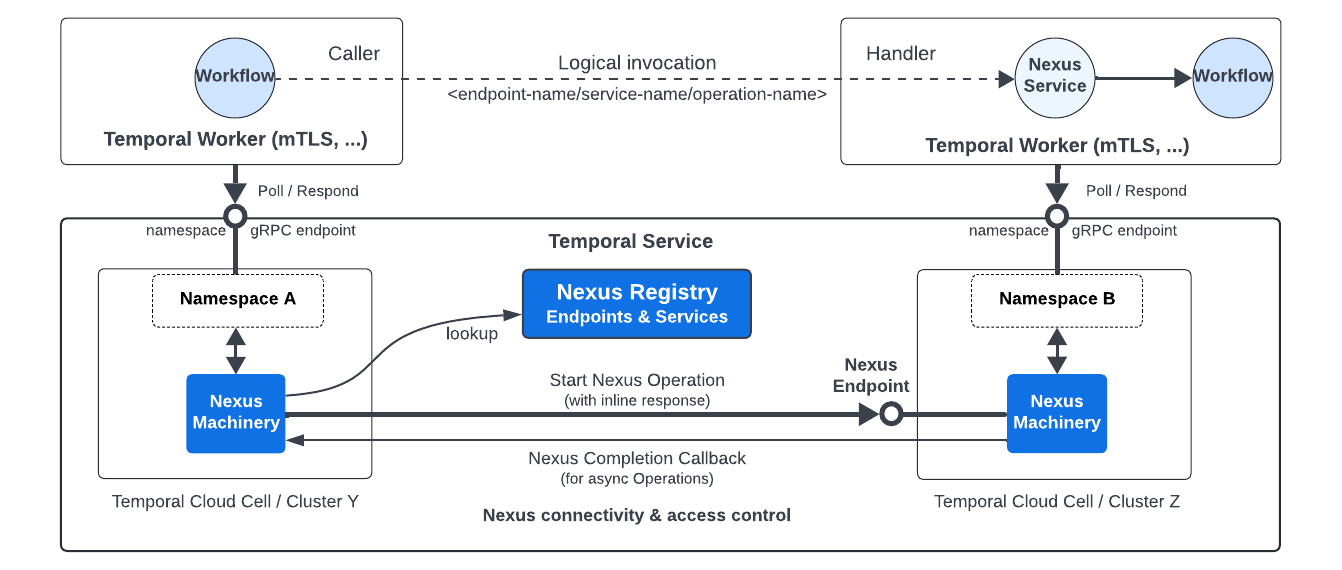Latency and Availability - Temporal Nexus
Temporal Nexus is now Generally Available. Learn why you should use Nexus in the evaluation guide.
Nexus requests (commands, polling) have the same latency SLOs and error rate SLAs as other Worker requests in both the caller and handler Namespaces.
Latency metrics
Nexus supports various latency metrics.
Worker to Temporal Cloud interactions
Nexus interactions between a Worker and Temporal Cloud use the Worker's Namespace gRPC endpoint. Nexus-related Worker interactions with Temporal Cloud have the same latency SLOs and availability SLAs as other calls to a Namespaces's gRPC endpoint.

Interaction between Workers and Temporal Cloud
This applies to the following Nexus-related interactions between a Worker and Temporal Cloud:
- Caller Namespace
- RespondWorkflowTaskCompleted - schedule a Nexus Operation.
- Handler Namespace
- PollNexusTaskQueue - get a Nexus Task to process, for example to start a Nexus Operation.
- RespondNexusTaskCompleted - report the Nexus Task was successful.
- RespondNexusTaskFailed - report the Nexus Task failed.
Nexus connectivity across Namespaces
Nexus connectivity in Temporal Cloud is provided by a global mTLS secured Envoy mesh. The cross-namespace latency between the caller's Nexus Machinery and the handler's Nexus Machinery varies based on the locality of the caller and handler Namespaces, which may be placed in different regions.
Communication between Namespaces in the same region will have lower latency. Communication across different regions will have higher latency. Consult the cross-region latency tables for your cloud provider(s) to estimate the latency for Nexus communication across Namespaces in Temporal Cloud.